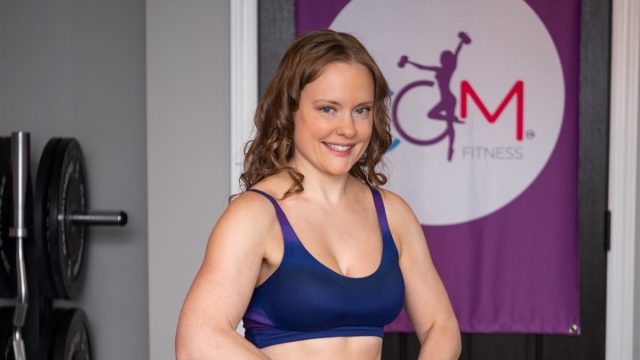6 Full-Body Workouts to Activate Every Muscle Group
As a certified personal trainer through the American College of Sports Medicine since 2005, I can tell you that doing full-body workouts gives you more bang for your buck. You can incorporate both lower and upper body movements in the same compound exercise, saving time instead of working them separately. These exercises also offer improved balance, better stability, enhanced coordination, and greater core strength. So, there's a whole host of benefits to doing full-body workouts rather than focusing on one muscle group at a time, especially since saving time is crucial nowadays. Here's how to do it.
Preparatory Steps to Take Before Starting a Workout Routine
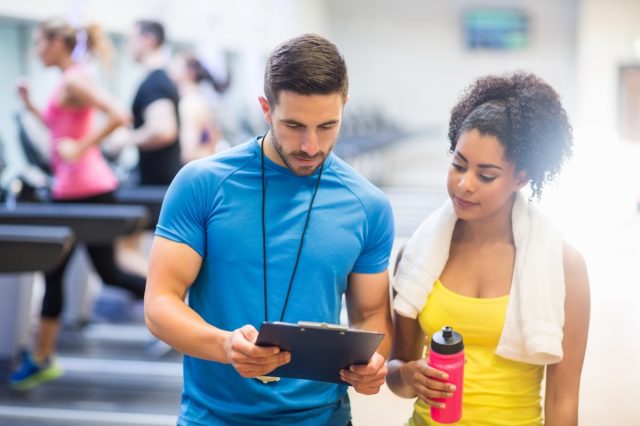
If you are new to strength training, first, you should get a doctor's clearance, especially if you have any underlying issues. For example, if you have a heart issue or a bone or joint issue, it's very important to get clearance from your doctor.
If you can't afford to do a ton of personal training sessions, try to buy a few sessions so you can be led in the general, correct direction with form, how to set up their exercise program, and make sure you're doing things correctly. The number one reason why people stop is that they're usually not doing things correctly. They get frustrated, they don't want to continue because they're not seeing results, or they get hurt. So, finding a properly certified trainer is important because a lot of trainers become certified overnight. Many coaches hold certifications such as ACSM, AFAA, NASM, and ACE. These are key qualifications to look for in a trainer's credentials.
First Full-Body Exercise I'd Recommend: Squat With Bicep Curl, Transitioning Into Press
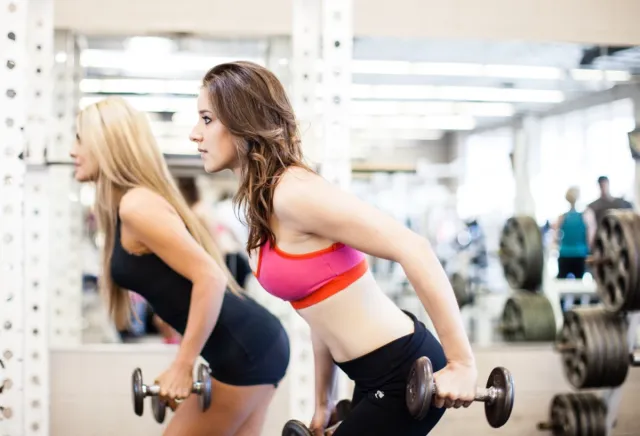
The first full-body exercise I would recommend is a squat combined with a bicep curl and then transitioning into a military or shoulder press. So, you would stand with your feet hip-width apart and parallel. You're holding two weights at your sides. They could be any size between five to 15 pounds, depending on your level. So, when you sit into the squat, you want to press your weight back into your heels. Your butt is all the way back and down. You want to bring your butt so it's almost down in line with your knees, but not quite parallel to your knees because then you could hurt your knees. You come up, press the hips forward, curl the arms, so you bring your thumbs to your shoulder height with the weights in them. The elbows stay back against your rib cage. And when you're standing tall, you're pressing those weights overhead into the military press. In the military press, you want to make sure you're not locking your elbows. You keep your head straight, and your elbows are close to your ears.
Second Full-Body Exercise I'd Recommend: A Push-Up With a Glute Raise at the Top
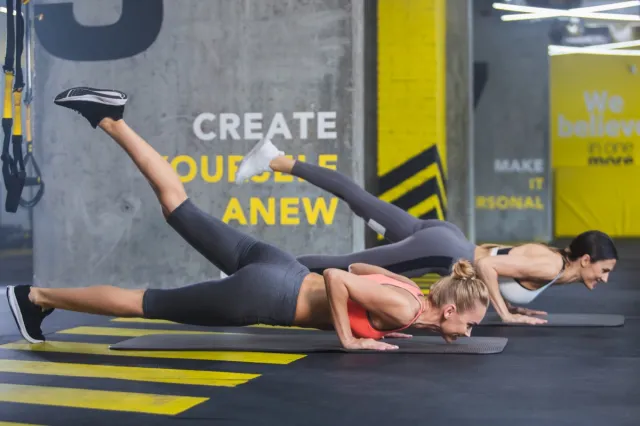
The second is a push-up with a glute raise at the top. You would start in a plank position with your wrists directly underneath your elbows and your elbows underneath your shoulders, ensuring your knees are directly underneath your hips. If possible, raise your knees off the floor; otherwise, you can keep your knees down. Perform your push-up by bending your elbows at a 90-degree angle to your sides. As you come all the way up, straightening your elbows at the top, you then proceed to the top of the plank movement, lifting your right leg up while squeezing your glutes. Follow by lifting your left leg up and squeezing your glutes, effectively working your chest, core, and glutes.
RELATED: Cara Metz Reveals 15-Minute Workout for Women Over 40
Third Full-Body Exercise I'd Recommend: The Quadruped Exercise

The Quadruped exercise targets multiple muscle groups, including the core and back for stability. It particularly engages the lower back and lats.
Starting in a kneeling position with your hands on the floor, essentially on all fours, you extend your right leg straight back while simultaneously reaching your left arm forward. Ensure your elbow is aligned with your ear and your leg is straight and extended behind you. After holding this position briefly, lower your arm and leg, then switch to the other side, always moving the opposite arm and opposite leg together. Additionally, by engaging your core and squeezing your glutes as you perform the movement, you can also incorporate some glute work into the exercise.
Fourth Full-Body Exercise I'd Recommend: Sumo Squat
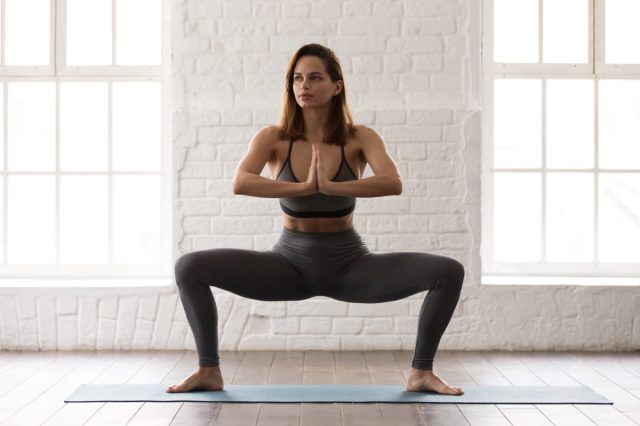
Another effective compound movement is the sumo squat combined with a shoulder shrug at the top. Begin by holding a heavy weight in each hand, positioning your feet wider than shoulder-width apart with your toes slightly turned outwards. Hold the weights in front of you. As you perform the squat, bend your knees and lower your body, aiming to bring your seat down towards your knees but keeping it just above knee level. As you ascend to the upright position, squeeze your glutes to engage not only the glutes but also the inner thighs. At the top of the movement, add a shoulder shrug to target your trapezius muscles by elevating your shoulders towards your ears, ensuring your knuckles face forward and slowly lowering them back down. A common mistake to avoid is dropping the shoulders too quickly after the shrug.
Fifth Full-Body Exercise I'd Recommend: Deadlift Into Tricep Kickback
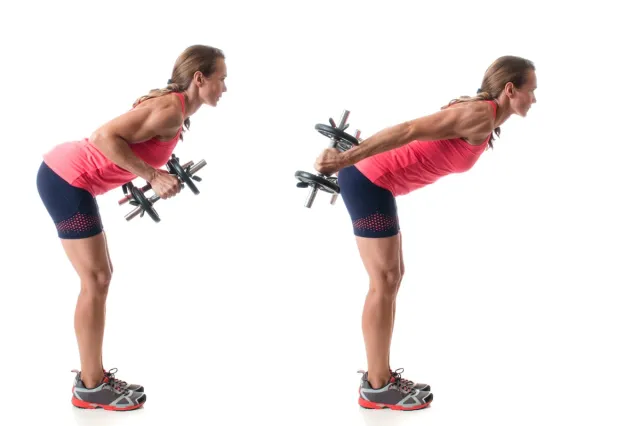
The exercise combines a straight-legged deadlift with a tricep kickback, targeting the triceps, hamstrings, and to some extent, the glutes. Begin by standing with your feet hip-width apart and parallel. Keep your elbows close to your sides, and your arms bent at a 90-degree angle. As you initiate the deadlift, hinge forward from your hips, projecting your chest and buttocks outward. Aim to bring your shoulders down in line with your hips, maintaining a slight bend in your knees to feel a stretch in your hamstrings at the bottom of the movement. Once you reach the hinge position with your body forming a 90-degree angle, proceed with the tricep kickback by extending your arms straight behind you, then return to the 90-degree angle before coming back up to the starting position. This exercise effectively works both the upper and lower body, offering a comprehensive strength workout.
Related: 15 Quick Ways to Lose Body Fat Percentage in a Week
Sixth Full-Body Exercise I'd Recommend: Alternating Lunges With Lateral Raises
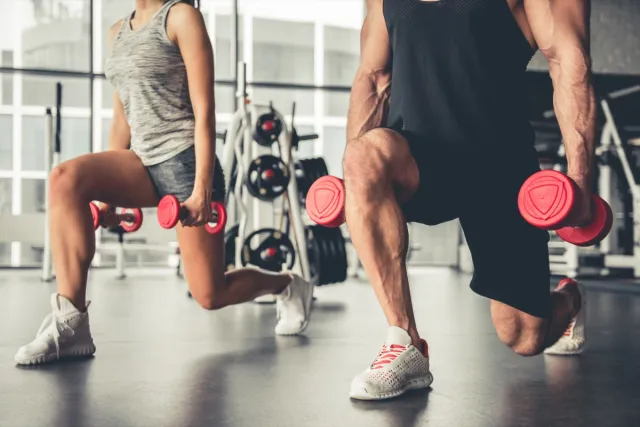
Lastly, we'll incorporate alternating lunges with lateral raises, an exercise that targets the quadriceps, glutes, a bit of the hamstrings, and the sides of the shoulders. Start by holding a light to medium-sized weight in each hand at your sides, with your palms facing your hips. Stand tall with your shoulders pulled back and down, and your core activated—as if bracing for a punch to the stomach. This core engagement is crucial throughout all the exercises I've described.
For the lunges, step one leg back at a time, ensuring the leg is far enough back so that your knee is directly underneath your hip. Keep the back heel lifted at the bottom of the lunge. Lower your leg to form a 90-degree angle at the knee. As you do this, perform a lateral raise by lifting your arms to shoulder height, weights in hand, then lower them before pushing back up to the starting position. Alternate legs with each repetition to ensure balanced muscle development and engagement.
Common Mistakes to Avoid When Doing Full-Body Exercises

A common mistake in total body workouts is attempting to target more than two or three muscle groups at once, which can lead to confusion and poor form. It's also frequent to see individuals rushing through movements. It's crucial to maintain proper posture and alignment during these exercises without hurrying. If you find yourself in a group fitness class and need to move slower than the pace set by the music or the instructor, take your time. Another important point is the tendency to mimic others in the class. You should focus on your own reflection in the mirror and the instructor's guidance, rather than copying others, as their technique might not be correct. Additionally, many fail to use their core effectively. In exercises like planks or pushups, I often observe backs arching or sinking, whereas they should remain flat with the core engaged throughout.
RELATED: 15 Proven Ways to Sculpt Your Dream Body by An Expert Coach
Final Word From the Trainer
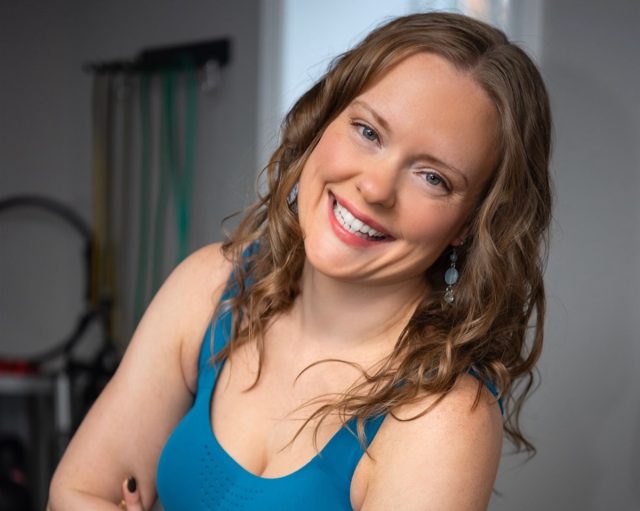
Some tips and advice for working out include finding the format that best suits you, a topic I specialize in and extensively cover on my website. It's important to recognize that what works for one person may not work for another. For example, some people may love barre workouts, while others might not enjoy them at all. I always recommend trying a new workout at least three times. The first time might not be enjoyable as everything is new. By the second attempt, you may start getting more accustomed to it, and often, by the third time, it might just click for you. If you still don't like it after three or four sessions, it's okay to move on and try something else, like Pilates or strength training.
💪🔥Body Booster: Remember, some people may not enjoy high-intensity interval training (HIIT), while others thrive on it. The key is to find something that resonates with you because that's when you'll be more inclined to stick with it and enjoy your workouts. And if you enjoyed this article, don't miss 12-3-30 Walking Method: 20 Proven Tips to Lose Weight Faster.
Cara D'Orazio is a Certified Personal Trainer and Group Fitness Instructor with 19 years of experience and the Owner of C.G.M. Fitness.
